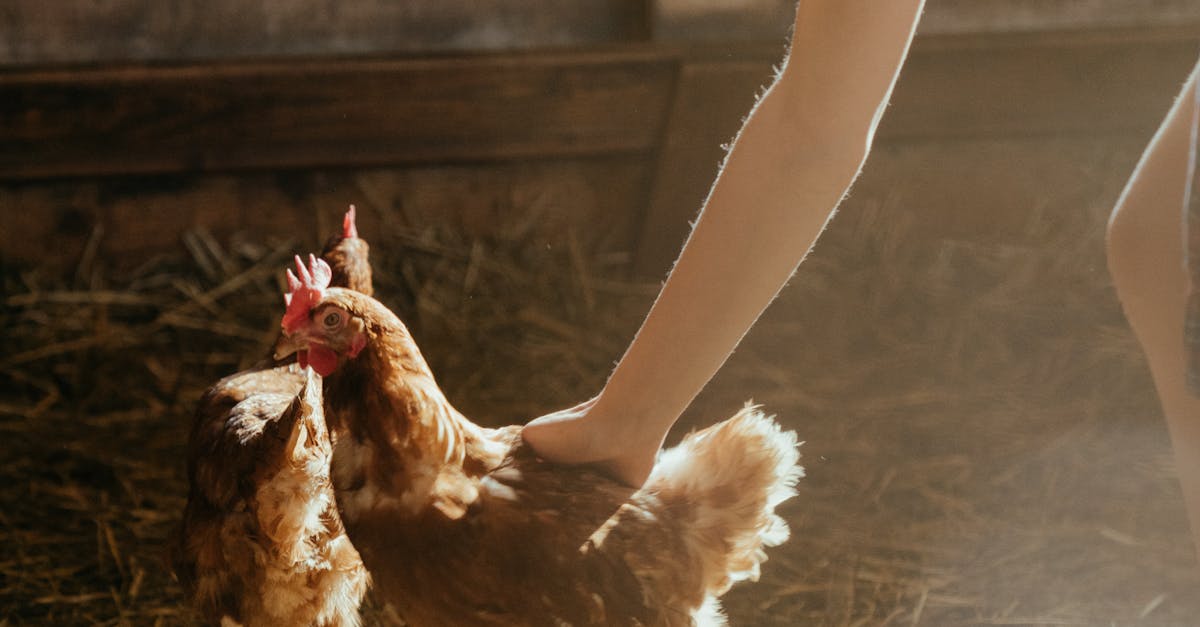Shedding Light on the Backbone of a Productive Chicken Coop
Managing a chicken coop is more than just providing food and shelter for your flock. One critical aspect that often gets overlooked is lighting. Proper lighting not only enhances the overall productivity of your hens but also ensures their health and well-being. This blog post delves into the importance of essential lighting for chicken coop management, offering you comprehensive insights to light up your chickens’ lives—quite literally.
Why Is Lighting Important for Chicken Coops?
Chickens, like all living creatures, respond to their environment. Natural cycles of light and darkness are essential for regulating their behavior, breeding cycles, and overall health. Here are the primary reasons good lighting is indispensable:
- Egg Production: Adequate and consistent lighting directly impacts egg-laying cycles. Chickens require approximately 14-16 hours of light per day to maintain optimum egg production.
- Health and Behavior: Lighting affects chickens’ circadian rhythm, sleep patterns, and social behaviors. Inadequate lighting can lead to stress, abnormal behavior, and susceptibility to diseases.
- Winter Management: Days are shorter in winter, leading to reduced natural light. Supplementing artificial light ensures egg productivity doesn’t decline during these months.
By understanding the role of lighting, poultry farmers can create an environment conducive to the well-being and productivity of their hens.
Optimal Types of Lighting for Chicken Coops
Various lighting options can be used to illuminate chicken coops, each with its own advantages and disadvantages. Here’s a breakdown of the most popular types:
Incandescent Bulbs
Advantages:
- Cost-Effective: These bulbs are cheaper upfront compared to other options.
- Easy to Install: They can be easily installed with standard fixtures.
Disadvantages:
- Energy Inefficient: Incandescent bulbs consume more energy, leading to higher electricity bills.
- Short Lifespan: They need frequent replacements, adding to maintenance costs.
- Heat Generation: They produce a lot of heat, which might be both an advantage (in cold climates) and a disadvantage (in warm climates).
Fluorescent Tubes
Advantages:
- Cool Lighting: These tubes produce less heat compared to incandescent bulbs.
- Energy-Efficient: They consume less power and have a longer lifespan.
Disadvantages:
- Initial Cost: Fluorescent tubes are generally more expensive to purchase and install.
- Light Flicker: Can cause stress to chickens due to the flickering.
LED Lights
Advantages:
- Highly Energy-Efficient: LED lights consume the least amount of energy and have the longest lifespan.
- Customizable: They come in various colors and intensities, allowing for tailored lighting conditions.
- Durable and Safe: LED bulbs are extremely durable and generate minimal heat, reducing fire risks.
Disadvantages:
- Initial Investment: Higher upfront costs compared to other lighting options.
Natural Light Solutions
Incorporating natural light remains the best option wherever possible. Skylights and large windows can be used to integrate sunlight into the coop. However, natural light alone is not enough, especially during the winter months.
Comparing Different Types of Lighting
| Lighting Type | Lifespan | Energy Efficiency | Cost | Heat Generation | Best For |
|---|---|---|---|---|---|
| Incandescent Bulbs | Short | Low | Low | High | Basic Needs |
| Fluorescent Tubes | Medium | Medium | Medium | Low | Balanced Use |
| LED Lights | Long | High | High | Very Low | Long-Term Use |
| Natural Light | Seasonal | High | Variable | Varied | Eco-Friendly |
Tailoring Lighting to Different Coop Areas
Effective coop management involves customizing lighting for various sections within the coop. Each area serves a unique purpose and thus requires different lighting considerations.
Hen House or Roosting Area
Needs:
- Night-Light: Soft, dim light is sufficient to avoid disorienting the chickens during roosting.
Nesting Boxes
Needs:
- Warm Light: Slightly warmer lighting can make nesting more comfortable for laying hens.
Feeding and Watering Area
Needs:
- Bright and Uniform Light: Ensures chickens can easily see their feed and water, promoting healthy consumption.
Implementing a Lighting Schedule
Optimal Lighting Duration
To achieve optimum egg production and maintain the health of your chickens:
- Daylight Extension: Provide between 14-16 hours of light per day.
Seasonal Adjustments
Winter:
- Supplemental Lighting: Extend daylight hours using artificial lights.
Summer:
- Reduce Overexposure: Ensure that hens aren’t exposed to more than 16 hours of light to prevent stress.
Advanced Lighting Solutions for Enhanced Chicken Coop Management
Automated Lighting Systems
Benefits:
- Consistency: Automated timers ensure lighting schedules are adhered to without manual intervention.
- Customization: Options to adjust intensity and duration based on changing needs.
Smart Monitoring Systems
Benefits:
- Real-Time Data: Provides insights into lighting effectiveness and chicken behavior.
- Alerts and Notifications: Immediate alerts for any abnormalities.
Installing Solar-Powered Lighting
For those keen on sustainability, solar-powered lighting options provide an eco-friendly alternative.
Advantages:
- Cost Savings: Reduces long-term electricity costs.
- Environmentally Friendly: Minimizes carbon footprint.
Challenges:
- Initial Setup Cost: Higher initial investment.
The Path Forward
Lighting is an often-overlooked element that significantly impacts hen productivity and health. Ensuring the right type of lighting can transform your chicken coop management, leading to consistent egg production, healthier chickens, and ultimately a more profitable venture.
For more advanced solutions, consider integrating automated and smart lighting systems, even exploring solar-powered options. Evaluate different types, customize per area needs, and maintain seasonal adjustments for optimal results. A well-lit coop is key to a thriving and productive flock.
Taking the Next Step
Implementing proper lighting solutions demands more than just selecting a bulb. It’s about understanding your flock’s needs, the layout of your coop, and the broader climatic conditions. Sensible investments in lighting can yield substantial returns in productivity and flock well-being.
To get started, evaluate current lighting conditions, identify areas for improvement, and consult reliable sources or experts in poultry farming. Experiment with these solutions, monitor results, and continually adapt to changing needs.
For more detailed insights and resources, consider these external materials:
Proper lighting can be the linchpin of successful chicken coop management. Illuminate your coop right and let your chickens shine! 🌟









